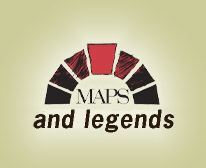This site was created in advance of the 1998 MAPS referendum in Birmingham, Alabama.
It is being maintained because there is still some interest in MAPS today.
A CLOSER LOOK AT THE METROPOLITAN AREA PROJECTS STRATEGY

What is MAPS?
How much will it cost?
Where will the money go?
What's so bad about it?
Who wants MAPS?
Who will run it?
What is RAPS?
How can I find out more?
How can I find out more?
- The complete MAPS Amendment as adopted by the Alabama Legislature. (Another copy here.)
- Summary of the MAPS Amendment, courtesy of Virtual Birmingham.
- Are New Stadiums Worth the Cost? by Noll and Zimbalist.
- Field of Schemes: News about stadium scams around the country.
- The Stadium Trap, from May 1988 Governing magazine, reprinted by RAPS.
- Bad Sports: Stadium revenues don't benefit the surrounding communities - at least, not without a fight.
- A chat with Rick Horrow, NFL stadium consultant and MAPS Steering Committee member.
- Official MAPS site - pretty to look at, but noticeably short on substance. This is where the MAPS Victory Committee publishes its press releases.
- RAPS: "Real Accountability, Progress, and Solutions" - another pretty site - but if I may say so, it is less informative than it could be. Jimmy Blake's Bill Summary is chaotic and cranky in places - but it does cover the MAPS bill in-depth and is worth a read.
- What other cities have done
- Public opinion poll, commissioned by Birmingham News, shows public opposed to MAPS tax
Share your opinion
There are several Internet opportunities to comment on MAPS:
- Comment at an online forum:
- Visit the RAPS website and write a comment in the Guestbook
- Vote early and often at Ron Hays' online MAPS poll
- Send e-mail to the editor of this website.
Excerpt from: "Are New Stadiums Worth the Cost?"
By Roger G. Noll and Richard Zimbalist
Industry experts estimate that more than $7 billion will be spent on new facilities for professional sports teams before 2006.
Most of this $7 billion will come from public sources. . . . State and local governments pay even larger subsidies than Washington. Sports facilities now typically cost the host city more than $10 million a year. Perhaps the most successful new baseball stadium, Oriole Park at Camden Yards, costs Maryland residents $14 million a year. Renovations aren't cheap either: the net cost to local government for refurbishing the Oakland Coliseum for the Raiders was about $70 million. . . .
. . . "Build the Stadium--Create the Jobs!" Proponents claim that sports facilities improve the local economy in four ways.
- Building the facility creates construction jobs.
- People who attend games or work for the team generate new spending in the community, expanding local employment.
- A team attracts tourists and companies to the host city, further increasing local spending and jobs.
- All this new spending has a "multiplier effect" as increased local income causes still more new spending and job creation.
Advocates argue that new stadiums spur so much economic growth that they are self-financing: subsidies are offset by revenues from ticket taxes, sales taxes on concessions and other spending outside the stadium, and property tax increases arising from the stadium's economic impact.
Unfortunately, these arguments contain bad economic reasoning that leads to overstatement of the benefits of stadiums. Economic growth takes place when a community's resources--people, capital investments, and natural resources like land--become more productive. Increased productivity can arise in two ways:
- from economically beneficial specialization by the community for the purpose of trading with other regions
- or from local value added that is higher than other uses of local workers, land, and investments.
Building a stadium is good for the local economy only if a stadium is the most productive way to make capital investments and use its workers.
In our forthcoming Brookings book, Sports, Jobs, and Taxes, we and 15 collaborators examine the local economic development argument from all angles: case studies of the effect of specific facilities, as well as comparisons among cities and even neighborhoods that have and have not sunk hundreds of millions of dollars into sports development. In every case, the conclusions are the same.
- A new sports facility has an extremely small (perhaps even negative) effect on overall economic activity and employment.
- No recent facility appears to have earned anything approaching a reasonable return on investment.
- No recent facility has been self-financing in terms of its impact on net tax revenues.
Regardless of whether the unit of analysis is a local neighborhood, a city, or an entire metropolitan area, the economic benefits of sports facilities are de minimus.
Read the entire article
What's wrong with MAPS
Changes
Thursday 02 July:
Thursday 24 June:
- This site was mentioned in Birmingham Weekly.
Monday 21 June:
Page edited by Rob Collins
Minor changes 25 July 2000
